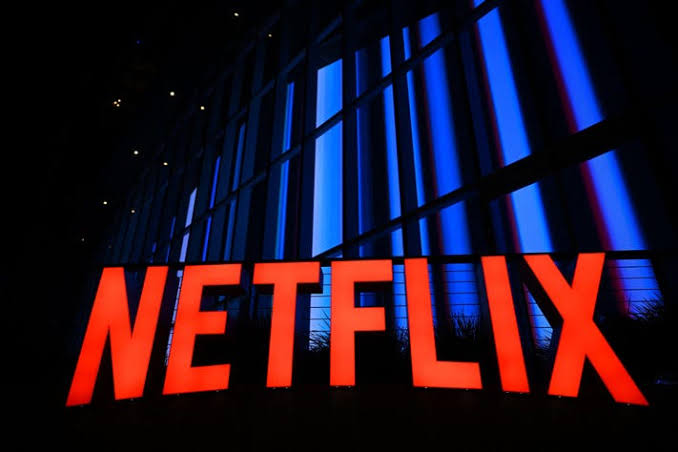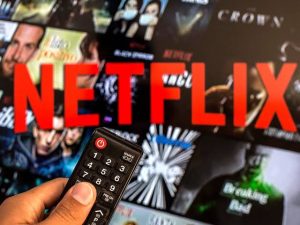
Brocons and Their Growing Popularity: How Netflix is Embracing the Trend
In the world of digital entertainment, trends emerge and evolve rapidly. One of the most intriguing shifts in recent years is the rise of “Brocons” — a term that is rapidly gaining traction, especially within the context of Netflix’s original programming. But what exactly is a Brocon, and why are these types of series and films becoming so prominent on the streaming platform?

What is a “Brocon”?
The term “Brocon” is short for “brother complex,” a subgenre that often centers around characters with an intense or complicated relationship with their siblings, typically brothers.
While this genre may sound niche, it is actually an offshoot of a long-standing trend in anime and manga cultures, which has made its way into mainstream media. The basic premise revolves around characters who may develop a deep emotional or psychological attachment to their siblings, often crossing boundaries of affection or obsession.
In many cases, these stories explore themes of familial love, personal conflict, and complex interpersonal dynamics. Though often controversial, Brocons offer a unique exploration of human emotions that resonates with viewers who enjoy psychologically intense, character-driven narratives. While the genre is more common in East Asian media, it has recently found its place in Western content, particularly on platforms like Netflix.

Netflix’s Growing Interest in Brocons
Netflix has been quick to identify and capitalize on emerging trends within the entertainment industry. As the demand for diverse and bold storytelling has grown, the streaming giant has made a conscious effort to include a wide variety of genres, including those that push boundaries. In doing so, Netflix has attracted an increasingly global audience eager to explore unconventional narratives.
The introduction of Brocon-themed shows on Netflix has, therefore, been an expected development in the platform’s wider push to provide more variety in its content. By offering original programming that taps into the Brocon genre, Netflix aims to capture the attention of audiences interested in exploring more emotionally complex and controversial themes.
Shows that deal with themes of sibling relationships have been part of Netflix’s diverse portfolio for some time. Series like The End of the F**ing World* and Ozark are often noted for their intense portrayals of family dynamics, though not strictly fitting the Brocon subgenre, they touch on some of the same themes of complicated relationships and emotional tension. With the increasing acceptance of darker, more intricate plots in mainstream TV, Netflix has been able to test the waters with even more explicit Brocon elements.
The Appeal of Brocon Shows
So, what makes Brocon shows so compelling to viewers? It all comes down to the complexity of the characters and relationships that are central to these narratives.

Brocon themes explore emotional and psychological depths that are rarely seen in mainstream media. The intense bonds between siblings can range from affection to dysfunction, creating a fertile ground for exploration of both love and obsession.
For some viewers, Brocon narratives provide an outlet for examining themes of possessiveness, jealousy, and the blurred lines between familial love and more taboo feelings. These types of stories often feature antiheroes or protagonists whose emotional struggles resonate on a universal level. As such, they attract viewers looking for deeper, more meaningful content than what is often found in more conventional family dramas.
Moreover, Brocon stories often feature very human dilemmas, such as trying to navigate personal identity, societal expectations, and family loyalty. The tension that arises from these emotional conflicts is relatable to many, which may explain the growing interest in Brocon-themed media.
Global Impact and Cultural Sensitivities
Despite the genre’s controversial nature, Brocons are also making waves globally, as Netflix’s worldwide reach exposes different cultural perspectives. The platform’s algorithms are often designed to promote content that resonates with a wide range of demographics, and the broad appeal of Brocon shows to audiences across different regions highlights the increasingly global interest in sibling-focused dramas.
However, it’s important to recognize that Brocon narratives may not resonate with all viewers due to their sensitive and sometimes taboo subject matter. Some critics argue that these stories may romanticize unhealthy relationships or perpetuate harmful stereotypes.

On the other hand, supporters of the genre contend that Brocons serve as a form of social commentary, offering a lens through which to view the complexities of human emotions and relationships. The conversation surrounding these themes is often nuanced, with differing opinions on the potential benefits or dangers of depicting such relationships.
The Future of Brocon on Netflix
Given the increasing demand for edgy and genre-bending content, it’s clear that Brocon-themed shows and films are likely to remain a part of Netflix’s original programming for the foreseeable future.
As the streaming service continues to diversify its content library to cater to global audiences, we can expect more innovative takes on the Brocon subgenre in the coming years.
In addition, the popularity of Brocon content may help shift the conversation around what kinds of narratives are acceptable in mainstream media. As taboo subjects become less stigmatized, audiences may be more willing to engage with shows that explore challenging and complex emotional territory.
Conclusion
The rise of Brocons on Netflix reflects a larger trend toward more complex, unconventional storytelling that resonates with a global audience.
Whether you view them as deeply unsettling or as poignant explorations of human emotions, Brocon shows are an undeniably captivating addition to Netflix’s diverse portfolio. As the platform continues to embrace bold new genres, viewers can expect to see even more content that pushes boundaries and challenges conventional norms.







